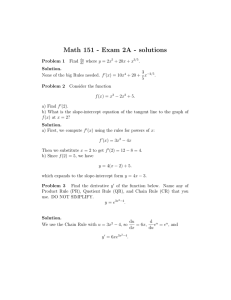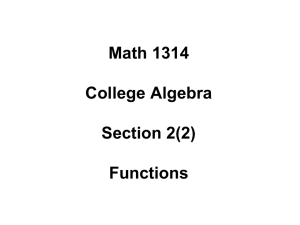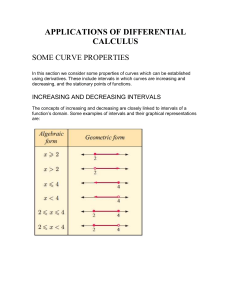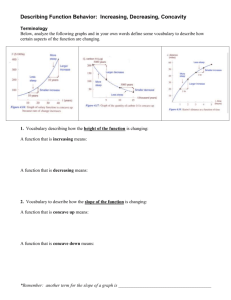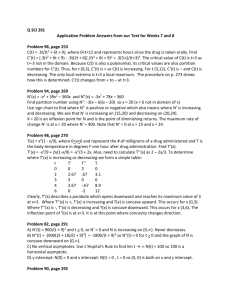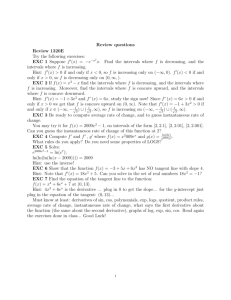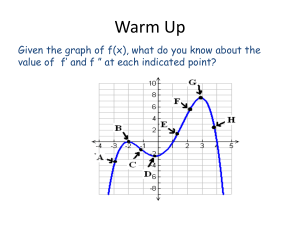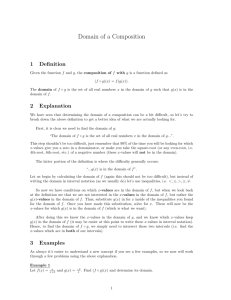MSWord Format
advertisement
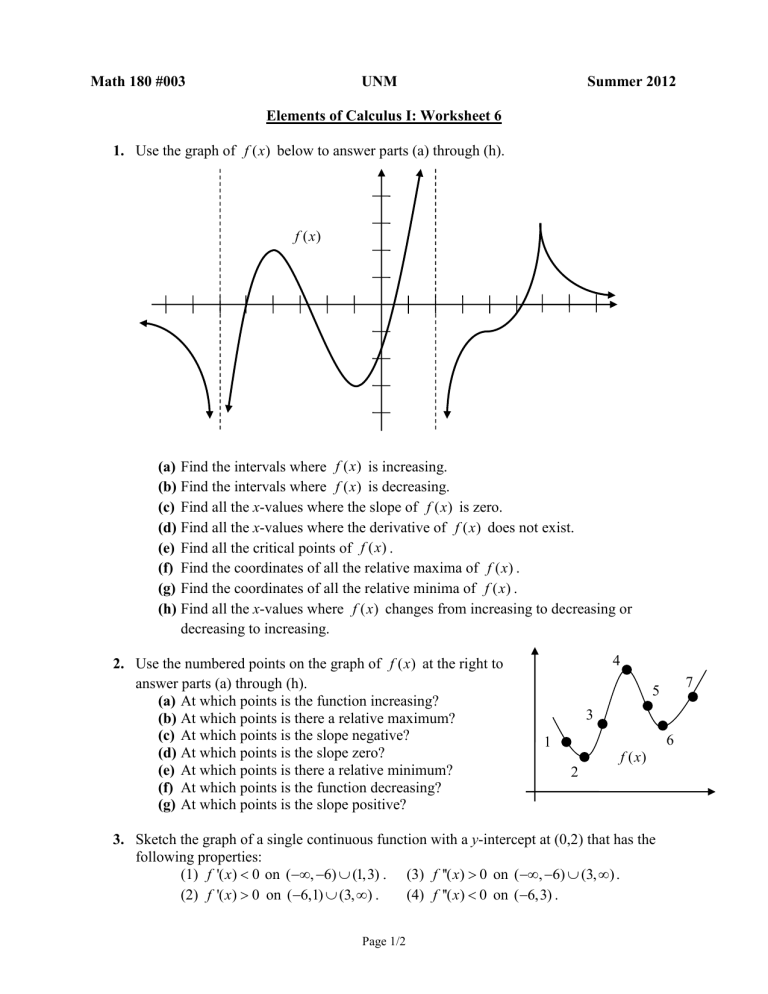
Math 180 #003 UNM Summer 2012 Elements of Calculus I: Worksheet 6 1. Use the graph of f ( x) below to answer parts (a) through (h). f ( x) (a) Find the intervals where f ( x) is increasing. (b) Find the intervals where f ( x) is decreasing. (c) Find all the x-values where the slope of f ( x) is zero. (d) Find all the x-values where the derivative of f ( x) does not exist. (e) Find all the critical points of f ( x) . (f) Find the coordinates of all the relative maxima of f ( x) . (g) Find the coordinates of all the relative minima of f ( x) . (h) Find all the x-values where f ( x) changes from increasing to decreasing or decreasing to increasing. 2. Use the numbered points on the graph of f ( x) at the right to answer parts (a) through (h). (a) At which points is the function increasing? (b) At which points is there a relative maximum? (c) At which points is the slope negative? (d) At which points is the slope zero? (e) At which points is there a relative minimum? (f) At which points is the function decreasing? (g) At which points is the slope positive? 4 3 6 1 f ( x) 2 3. Sketch the graph of a single continuous function with a y-intercept at (0,2) that has the following properties: (1) f '( x) 0 on (, 6) (1,3) . (3) f ''( x) 0 on (, 6) (3, ) . (2) f '( x) 0 on (6,1) (3, ) . (4) f ''( x) 0 on (6,3) . Page 1/2 7 5 4. Use the graph of f '( x) at the right to answer parts (a) through (i). (a) What is the slope of f ( x) at x 2 ? (b) For which x-values does f ( x) have a horizontal tangent line? (c) Find the intervals where f ( x) is increasing. (d) Find the x-values where f ( x) has a relative minimum. (e) Find the x-values where f ( x) has a relative maximum. (f) Is f ( x) increasing or decreasing at x 5 ? (g) Is f ( x) concave up or concave down at x 4 ? (h) Find the x-values where f ( x) has an inflection point. (i) Find lim f ( x) . f '( x) x 5. Match each observation 1-5 to each conclusion A-E. (1) The point (3, 4) is on the graph of f '( x) . (2) The point (3, 4) is on the graph of f ( x) . (3) The point (3, 4) is on the graph of f ''( x) . (4) The point (3, 0) is on the graph of f '( x) and (3, 4) is on the graph of f ''( x) . (5) The point (3, 0) is on the graph of f '( x) and (3, 4) is on the graph of f ''( x) . (A) f ( x) has a relative minimum at x 3 . (B) When x 3 , the graph of f ( x) is concave up. (C) When x 3 , the tangent line to the graph of f ( x) has slope 4. (D) When x 3 , the value of f ( x) is 4. (E) f ( x) has a relative maximum at x 3 . 6. In the graph of f ( x) at the right, assume that ( 1,1) is an inflection point. Use the graph to answer parts (a) through (k). (a) Find the intervals where f ( x) is decreasing. (b) Find the intervals where f '( x) 0 . (c) Find all the critical points. (d) Find the intervals where f ( x) is concave up. (e) Find the intervals where f ( x) is concave down. (f) Is f '(4) positive, negative or zero? (g) Is f ''( 4) positive, negative, or zero? (h) Is f '(0) positive, negative or zero? (i) Is f ''(0) positive, negative or zero? (j) Is f '(1) positive, negative, or zero? (k) Is f ''(1) positive, negative, or zero? Page 2/2
